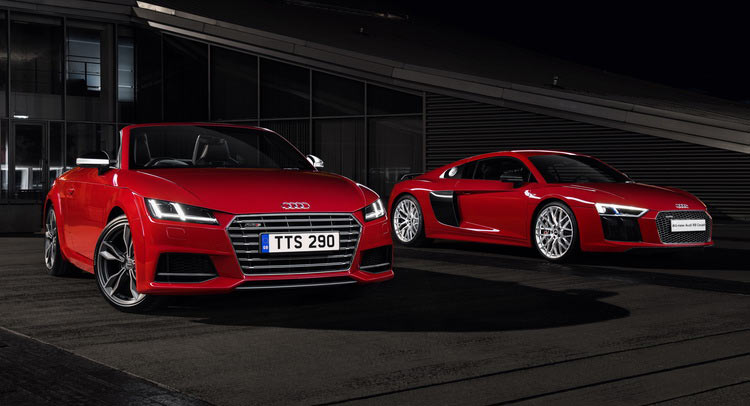As a front-runner in automotive lighting, Audi has set out to ensure that its most sophisticated developments in this particular field will be more accessible on UK models .
To start off, low energy & high intensity LEDs are now available across the board for all Audi models, whether it’s daytime running lights, all-weather LED headlights or Matrix LED units. Laser lighting is also getting ready to make its presence felt, available initially in the form of spotlights for the new-generation R8 supercar.
Also, every Audi ordered in S line spec is equipped with LED daytime running lights as standard, whereas Xenon plus lights are paired up with LED DRLs on models such as the A1, A3, A5 and Q5 S line.
Technically speaking, the most sophisticated headlamp currently on any of the German manufacturer’s models is the Audi Matrix LED unit, which maintains a constant high beam without dazzling incoming traffic, while also providing maximum illumination on the road.
The unit is able to operate fully electronically, without any mechanical parts – individual light-emitting diodes in each unit can be lit individually or dimmed just as easily in an instant, therefor diverting the beam around leading and incoming traffic.
Right now, this technology has extended to 6 out of the 11 Audi models currently available to order, including the all-new A4, A6, A7, Q7 and TT. All models that come with Matrix LED tech also feature front and rear dynamic indicators which ‘sweep’ sequentially in the direction in which the driver uses to travel.
All-LED headlamp units can also feature laser beams in some Audi models. The all-new R8 V10 and V10 plus come with laser spots which activate at 60 km/h (37 mph) in order to double the range of the high-beam light. The 300 micrometer laser diodes are paired up four at a time for each module, and generate a blue laser beam with a wavelength of 450 nanometers. In other words, it sounds fancy and works great at the same time.
The next step for Audi will be Matrix laser headlights, which will break the light beam down into tiny pixels in order to better illuminate the road in high resolution. This type of tech has significant implications for piloted driving models in the future – for example they can lay down a pattern of light and dark zones directly in front of the car, projecting a sort of walkway for pedestrians, showing them it’s safe to cross the street.
Looking further into the future, Audi is making great strides in further developing OLED integration, allowing for the light to move freely and organically beyond the traditional ‘sealed unit’ headlamps of today. While they look really cool, some tests done by Audi reflect a complete change in rear fascia appearance in order to incorporate this type of technology – this of course has aesthetic implications that the German manufacturer needs to work out.
Advanced LED lighting can now be specified on the full Audi model range, which consists from DRLs to all-weather LEDs, as well as adaptive Matrix headlights.












